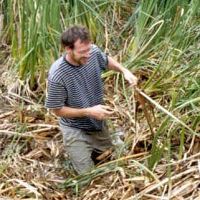Purdey et al., 2016
SMAP Soil Moisture Data To Improve Remotely Sensed Global Estimates of Evapotranspiration
Purdey, A.J.; Fisher, J.; Goulden, M.; Famiglietti, J.S. (2016)
Fall Meeting, American Geophysical Union, December 2016. Abstract H24C-02.
-
Sierra, INVESTIGATOR
Abstract
Surface water availability limits plant productivity and the ability to transport water from the soil to the atmosphere in over 1/3rd of earth’s vegetated land. Quantifying evapotranspiration (ET) across large areas requires the integration of satellite-observed land surface variables into physical or empirical equations that govern the transfer of mass and energy from land to the atmosphere. Many satellite ET algorithms have been developed to compute ET globally, but the current methods of two widely-used ET algorithms rely on implicit representation of soil moisture, limiting their capacity to impose proper physical constraints on ET under water limiting conditions. The successful launch of the Soil Moisture Active Passive (SMAP) satellite provides the first space-based soil moisture observations with the fidelity and the necessary spatio-temporal resolution to integrate directly into remote sensing ET algorithms and compare to in situ observations. Here we incorporate SMAP soil moisture observations into two widely used ET algorithms, the Priestley Taylor Jet Propulsion Laboratory (PT-JPL) ET model and the Penman Monteith MOD16. We present new soil moisture stress formulation and parameterization for each algorithm and evaluate model performance before and after soil moisture integration across a suite of in situ observations spanning a range of plant functional types and climates.
Citation
Purdey, A.J.; Fisher, J.; Goulden, M.; Famiglietti, J.S. (2016): SMAP Soil Moisture Data To Improve Remotely Sensed Global Estimates of Evapotranspiration. Fall Meeting, American Geophysical Union, December 2016. Abstract H24C-02..
Explore Further

